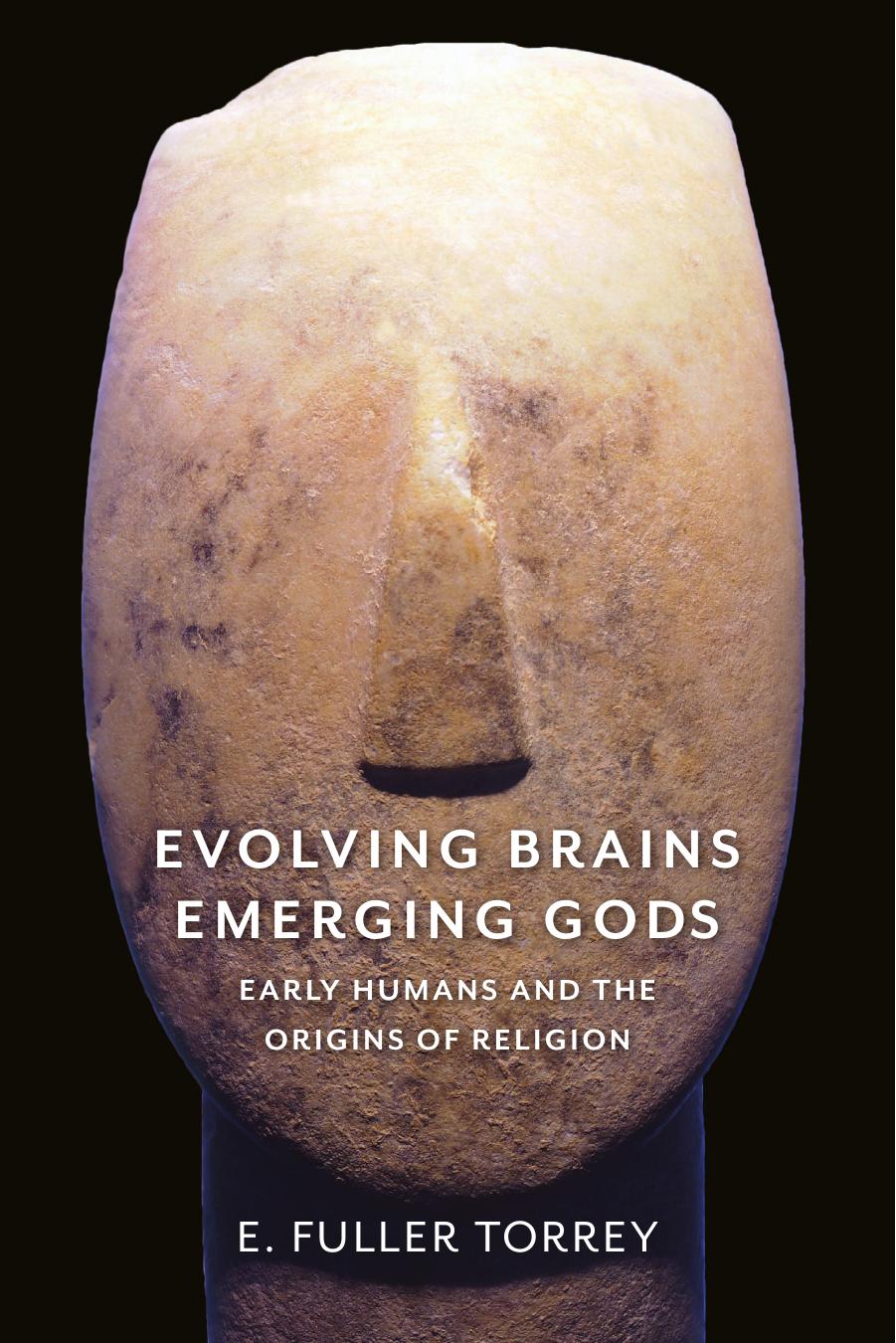Evolving Brains, Emerging Gods: Early Humans and the Origins of Religion by E. Fuller Torrey

Author:E. Fuller Torrey
Language: eng
Format: epub, pdf
Tags: science, Cognitive Science, Life Sciences, Neuroscience, Religion, Theism, Psychology, Neuropsychology, Evolution
Publisher: Columbia University Press
Published: 2017-09-05T01:15:56.185000+00:00
The second thing that had to happen before the higher gods could emerge was the coming together of a critical mass of people. Groups of hunter-gatherers, which usually numbered fewer than 100 people, may have honored ancestor spirits and spirits of nature, but there would have been little reason to elevate these spirits to deities. As groups of hunter-gatherers came together and settled in villages and towns, however, it would have been necessary to establish a hierarchy among the competing spirits, just as it was necessary to do so among the human leaders of the various hunter-gatherer groups. Out of this hierarchy of spirits emerged the first gods, which were simply high-ranking spirits with advanced degrees conferred by a consensus of the people.
The population increase that took place during the agricultural revolution, fueled by a stable food supply made possible by the domestication of plants and animals, resulted in the coming together of the critical mass of people. When Göbekli Tepe was being used as a ceremonial center 11,000 years ago, the world’s population was, according to estimates, approximately five million. When the world’s first temple in Mesopotamia was being used to honor a god 6,000 years ago, the world’s population, according to estimates, increased to approximately 100 million, and by 2,000 years ago, to 300 million.54
A relationship between the size of a population and the type of gods that exist in that population has been clearly established. In 1960 Guy Swanson, a psychologist at the University of California at Berkeley, published a study of gods in 50 “primitive” societies, a sample of George Murdoch’s ethnographic database of 556 societies. Swanson reported a significant correlation between societies that were more socially and politically complex (had more “sovereign organizations”) and the existence of “high gods” (“a god who rules the world and heavens”). A more recent study reported a highly significant correlation between the size of societies (number of levels of political authority beyond the local community) and the existence of “moralizing gods” (“gods who tell people what they should and should not do”). This relationship was summarized by Azim Shariff, a psychologist at the University of Oregon, in a paper aptly titled “Big Gods Were Made for Big Groups.” Sheriff noted that “big gods … tend to be relatively recent Holocene innovations and ones that developed only in large, complex societies.” The association of “big gods” with big populations is also emphasized in recent books on the god-is-watching-you theory of religion, summarized in chapter 8.55
Download
Evolving Brains, Emerging Gods: Early Humans and the Origins of Religion by E. Fuller Torrey.pdf
This site does not store any files on its server. We only index and link to content provided by other sites. Please contact the content providers to delete copyright contents if any and email us, we'll remove relevant links or contents immediately.
The Art of Thinking Clearly by Rolf Dobelli(10175)
Mindhunter: Inside the FBI's Elite Serial Crime Unit by John E. Douglas & Mark Olshaker(9160)
Change Your Questions, Change Your Life by Marilee Adams(7610)
Nudge - Improving Decisions about Health, Wealth, and Happiness by Thaler Sunstein(7544)
Mastermind: How to Think Like Sherlock Holmes by Maria Konnikova(7195)
The Power of Now: A Guide to Spiritual Enlightenment by Eckhart Tolle(5584)
Men In Love by Nancy Friday(5138)
Altered Sensations by David Pantalony(5030)
Factfulness: Ten Reasons We're Wrong About the World – and Why Things Are Better Than You Think by Hans Rosling(4675)
The Confidence Code by Katty Kay(4173)
Thinking in Bets by Annie Duke(4140)
Man and His Symbols by Carl Gustav Jung(4056)
The Worm at the Core by Sheldon Solomon(3418)
Why Buddhism is True by Robert Wright(3388)
Liar's Poker by Michael Lewis(3353)
Three Women by Lisa Taddeo(3344)
The Inner Life of Animals by Peter Wohlleben(3246)
Descartes' Error by Antonio Damasio(3209)
The Power of Mindful Learning by Ellen J. Langer(3174)
